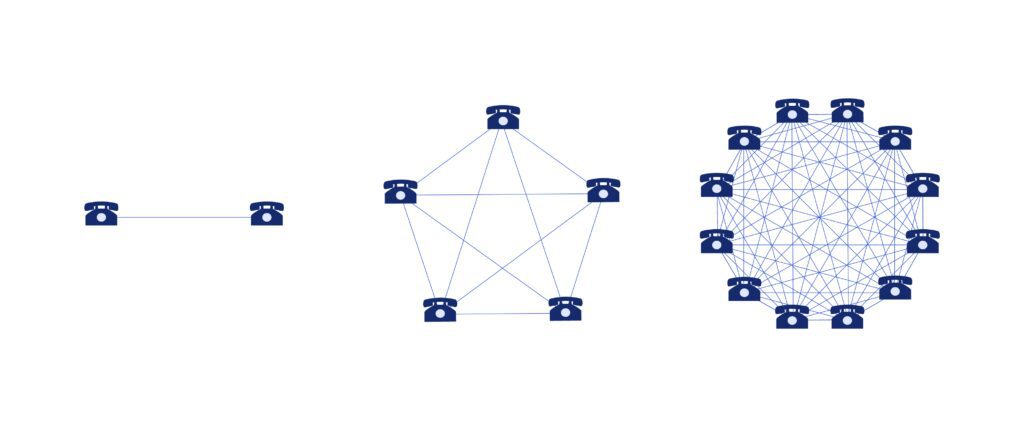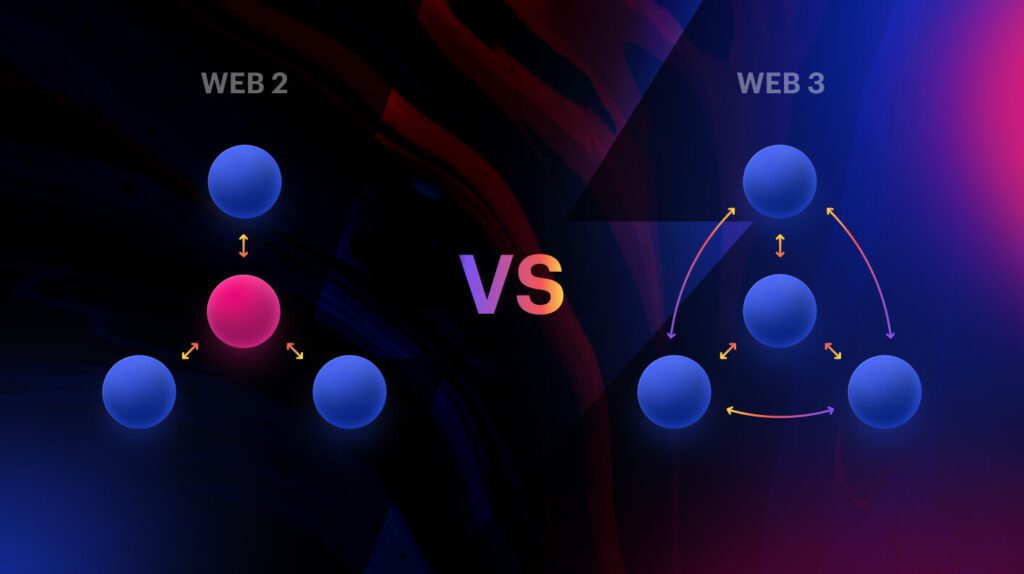- The Network effect theory states that the value of a product or service increases based on an increase in users.
- Bitcoin’s value plummeted because most individuals withdrew from its blockchain network by selling off their bitcoin.
- Facebook is currently the highest-earning social media platform generating revenue of $116.6 million, placing it as the highest-earning Web2 media platform.
Throughout the past decade, Africa’s Web3 network has substantially grown into the hearts of individuals and organizations. Its crucial elements like NFT, DeFi and crypto have steadily expanded. Unfortunately, with the recent crypto crash, its whole ecosystem took a substantial blow. Its fintech and crypto Industry took a left kick but still managed to survive and is consistently striving. This resilience and persistence is no random effect. Instead, a single terminology explains it; the Network effect theory. Here is a look at how a decentralized network in Africa’s ecosystem can thrive through this application and why Web2 failed at applying the same concept.
What is the Network Effect Theory
In layman’s language, the Network effect theory is a phenomenon that occurs when the value of a product or service increases based on an increase in users. Essentially if the user base of any organization expands, it expands the interaction of the product. This leads to an increase in benefits and positive revenue for the organization. In the 1990s, Joseph Farrell, Michael L, Carl Shapiro, and Garth Saloner coined the term after researching the emerging use of telephone services.
Also, Read Africa Blockchain Center initiates a journey to Africa’s prosperity.
According to their finding, they stated that with every new user added within the old network, subsequently increases the value of all existing users. At the time, these three researchers took a telephone line network to explain the importance of this effect. Essentially they stated that in a telephone connection comprising two users the value of the entire network would only comprise a single connection.

This concept is essentially the fundamental functionalities of social media today. The number of users directly correlates to its value. Facebook is currently the highest-earning social media platform generating revenue of $116.6 million, placing it as the highest-earning Web2 media platform. Likewise, it has the highest number of users at 2.6 billion. This is a perfect example of the network theory. Unfortunately, despite its clear benefits, Web2 has failed to completely apply it in other sectors, especially within Africa’s ecosystem.
Categories of the network effect theory
There are three primary forms of the network effect theory which apply to Web2. Unfortunately, only two have significantly aided Africa’s Web3 Networks. They include
- Direct network effect – As the name suggests, this is the straightforward increase in value with an increase In user base. It has formed the basis of Web3’s crypto ecosystem. If a cryptocurrency aims at dominating The decentralized network of Africa it has to acquire just as many users as its predecessors. This is essentially a difficult feat to attain if the new crypto coin is unable to present any new features that titans like Bitcoin, Ethereum and Cardano have accomplished;
- Indirect network effect – this occurs when the users of a product increase not because of the original product but because of a specific feature or a side product ts offers. This network theory essentially led to the rapid creation of blockchain forks. Users could gain different functionalities from a product that ran on the same blockchain space as the original product. A prime example is the vast adoption of Bitcoin Cash in Africa’s ecosystem. In addition, the development of decentralized networks or applications has led to the mass adoption rate of products such as Cardano in Africa. In a way, Africa’s fintech industry also benefits from this effect. The number of alternate services or branches may be more popular than the main services.
- Negative network effect – this is essentially an inverse effect that occurs within a network. Here the low number of users represents an increase in the value of a product. It also represents an increase in users will essentially slow the network and thus reduce the overall value of s services. This often occurs when a decentralized network cannot keep up with the demand from the users. This often causes a paradox effect. If a product cannot keep up with the number of users, it means its product is either of high value or has poor infrastructure. Unfortunately, its lack of efficiency causes its network to slow down. This causes a downward trajectory in its value. This lead to users abandoning its services, but once its network is optimal the cycle starts again.
Why Web2 failed at implementing the network effect in Africa
Before the introduction of Web3 networks in Africa, it struggled to adopt and profit from Web2 into its system. Today Web2 systems perfectly depict authoritarianism, while Web3 depict libertarianism. Their network each represent a fundamentally different concept. Web2 has had its roots in the global tech industry for some time now. Globally, its network effects were dominant, but when narrowed down to Africa’s ecosystem, it simply fell short.
Also, Read The Evolution of Digital Asset Marketplaces in a Web3 Economy.
Web2 or traditional network effects essentially consumed twice the effort to gain the same result. Organizations had to spend more on branding since the value of their product directly correlated to the number of searches they had. This led to heavy costs for improving aspects such as video, audio, or written content as of Strategy to rank their product on google or YouTube.

As a result, Web2 essentially branded the value of a product based on the number of searches it acquired. The higher the number of searches, the higher the likelihood that your network will gain more users. Due to this, a few organizations dominated specific markets. They had enough money to ensure their products were always on the first page. This limited the number of options individuals have. Thus instead of the value of the product bringing in revenue, it became the number of searches.
How Web3 is utilizing the network effect in Africa
If you are yet to connect the dots, the network effect essentially places value on the amount of demand on a network. This theory directly powers various elements of Africa’s web3 networks like crypto. One of the detrimental factors within Africa’s crypto industry is volatility. It depicts the value of crypto coins depending on their demand. The demand for a crypto coin directly correlates with the number of users within the decentralized network. Thus if the number of users in the Ethereum blockchain increased, the price of Ether would also increase. Considering the 2022 crypto crash, Bitcoin’s value plummeted because most individuals withdrew from its blockchain network by selling off their bitcoin.

Also, Read FTX trading LTD finally hits rock bottom.
The NFT marketplace is another aspect of Africa’s web3 network that benefits from employing the network effect theory. Currently, countries such as Nigeria, Kenya and South Africa are making waves through their talented NFT artists. Similar to crypto, the value of NFT can increase if the number of interested parties each bid on a particular NFT. This is applied directly to the NFT art and benefits Africa’s ecosystem and NFT market. As individual African NFT artists, the value of their artwork increases based on the number of bids an individual makes. If multiple individuals bid on a single NFT art, typically, the highest bidder win.
This can also increase the efficiency of the decentralized network. One of the reasons why Web3 is superior to Web2 is its decentralized nature. It allows the entire network to exist in multiple nodes simultaneously. An increase in users within a particular network will increase the resources available. This propels its functionality.
Considering the functionalities of Ethereum’s blockchain network, its ability to function efficiently is mainly due to its vast user network. With each organization or user that joins Ethereum’s blockchain network, it consecutively increases its overall functionality. One of the key failing points of Web2 is that it derides its performance on the number of users. This creates a negative network effect. Instead, Africa’s Web3 network extends and assimilates the added user adding more resources to its decentralized network.
Wrapping Up
When applied, the network effect theory creates a cycle of growth for Africa’s fintech industry, crypto ecosystem and overall decentralized network. Africa’s ecosystem can easily adapt to the numerous elements of Web3. Through this Africa has rapidly gained technological advancements in blockchain technology and AI. Soon enough we might dominate the ecosystem completely.
Also, Read NFTs and blockchain technology spell out an end to counterfeits in the fashion industry.
